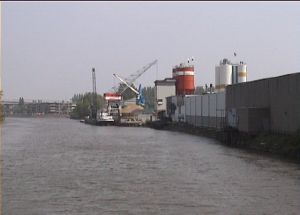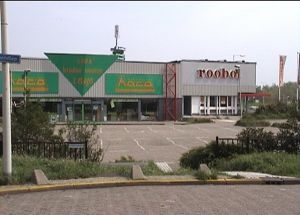| The walk starts at the Island of Brienenoord.
This is a weird patch of wild nature dropped into
the middle of the city. Many Rotterdammers
don’t even know it exists. |
 |
 |
| This is the view North. To
continue the walk I would have to cross the
river. So I turn South. |
 |
 |
| I follow the semi hardened roads
and admire the old infrastructure between the
trees. I think this is a telephone switchbox. |
 |
 |
| I cross the Hoendiep.
Looking East I see the warehouses and sand silo's
of the Zuid Diepje.
Someday I want to float here with a rubber boat. |
 |
 |
| At the Stadionweg
I enter a bland commercial area. Here are caravan
dealerships, shops with building materials,
storage providers etc. It's a very busy area. It
is one of those chaotic fringe city areas where
you can find new buildings alongside, busy
highways and old neglected brownfields. A place
for further research. |


